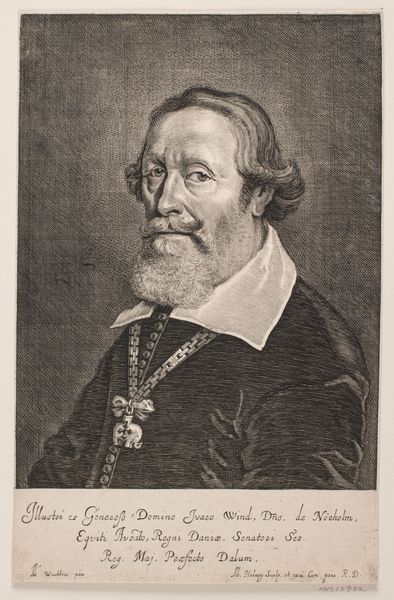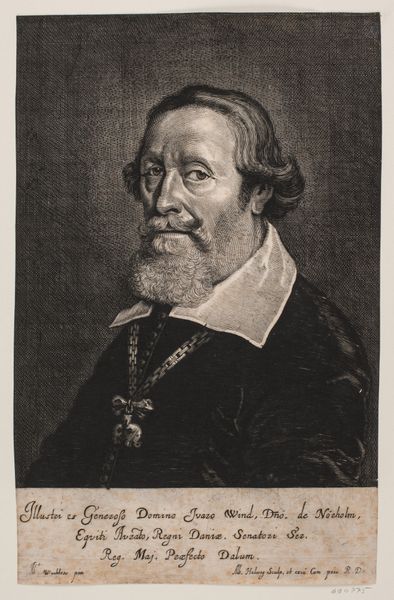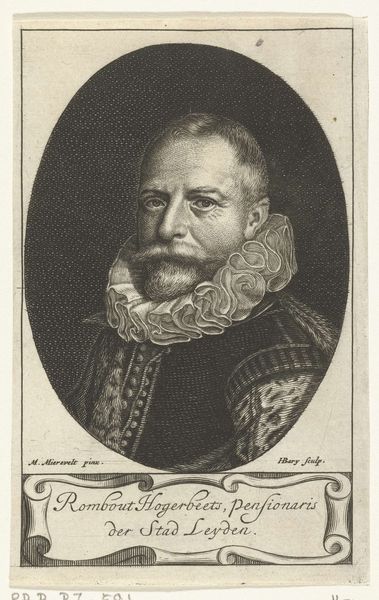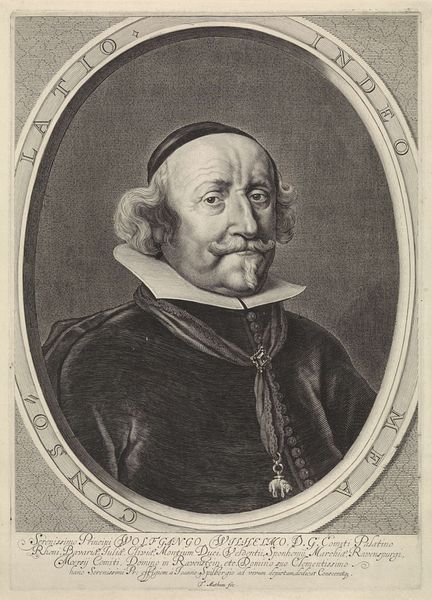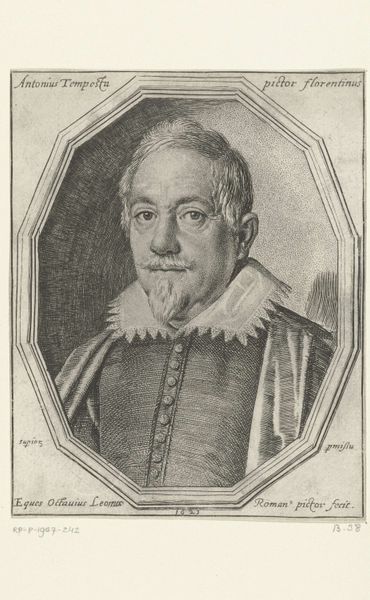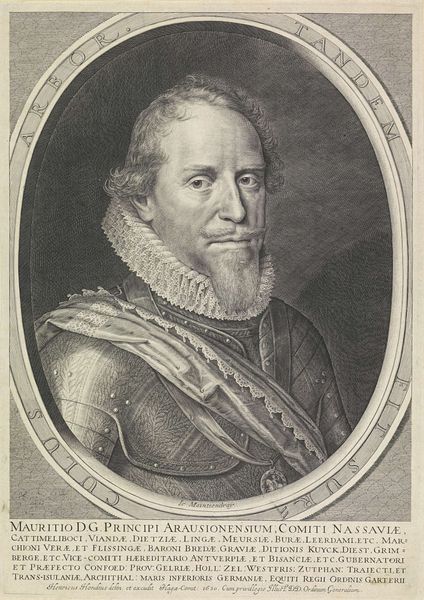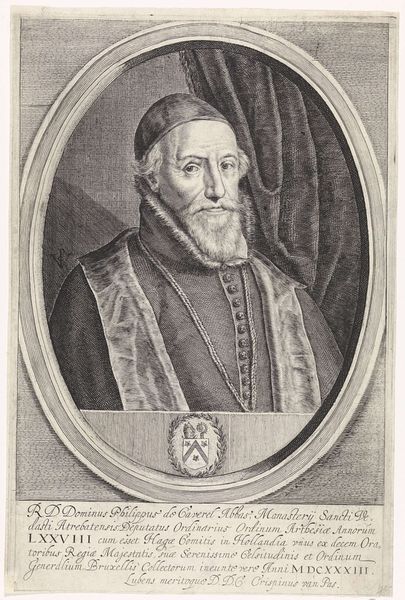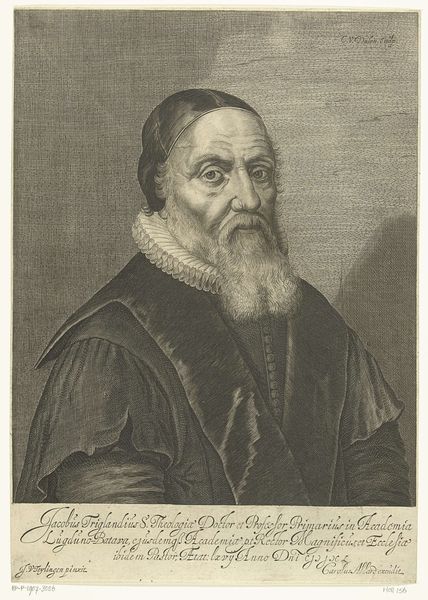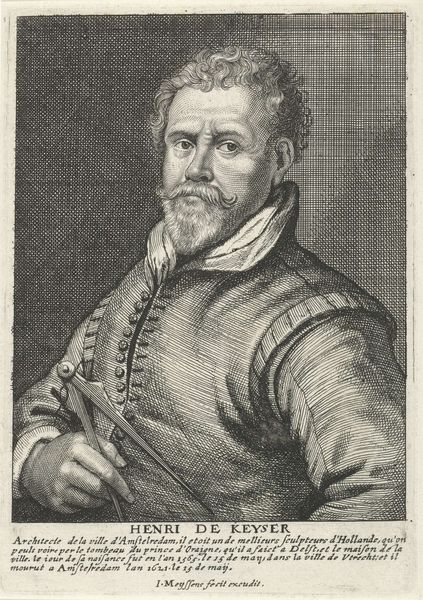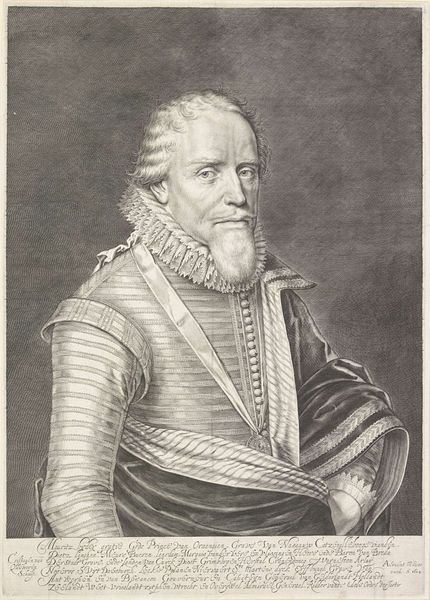
engraving
#
portrait
#
baroque
#
charcoal drawing
#
portrait drawing
#
engraving
Dimensions: height 310 mm, width 210 mm
Copyright: Rijks Museum: Open Domain
This is a portrait of Ivar Wind, made by Albert Haelwegh in the 17th century. It's an engraving, meaning the image was incised into a metal plate, probably copper, then inked and printed onto paper. Engraving was a highly skilled craft, demanding years of training to master the use of burins and other specialized tools. Look closely, and you can see how Haelwegh used a vocabulary of fine lines to describe Wind's features, clothing, and even the texture of his beard. The density and direction of these lines create subtle gradations of tone and shadow, bringing the portrait to life. The choice of engraving itself carries social significance. It was a reproductive medium, capable of producing multiple copies, which made it ideal for disseminating images of important figures like Ivar Wind. But it also served as a luxury good, bought and sold on the market. Considering the materials and making of this print reminds us that even seemingly straightforward portraits are the result of complex cultural and economic forces.
Comments
No comments
Be the first to comment and join the conversation on the ultimate creative platform.
